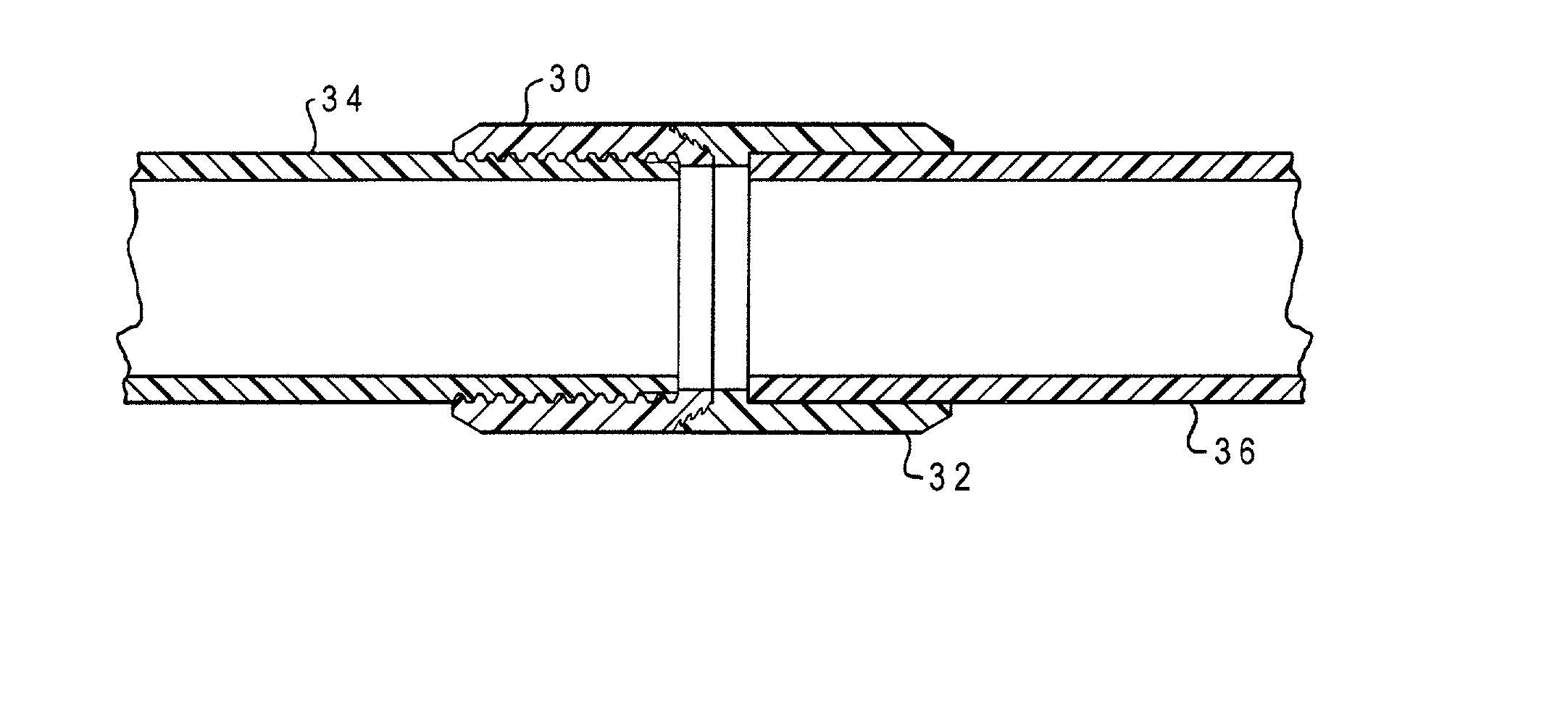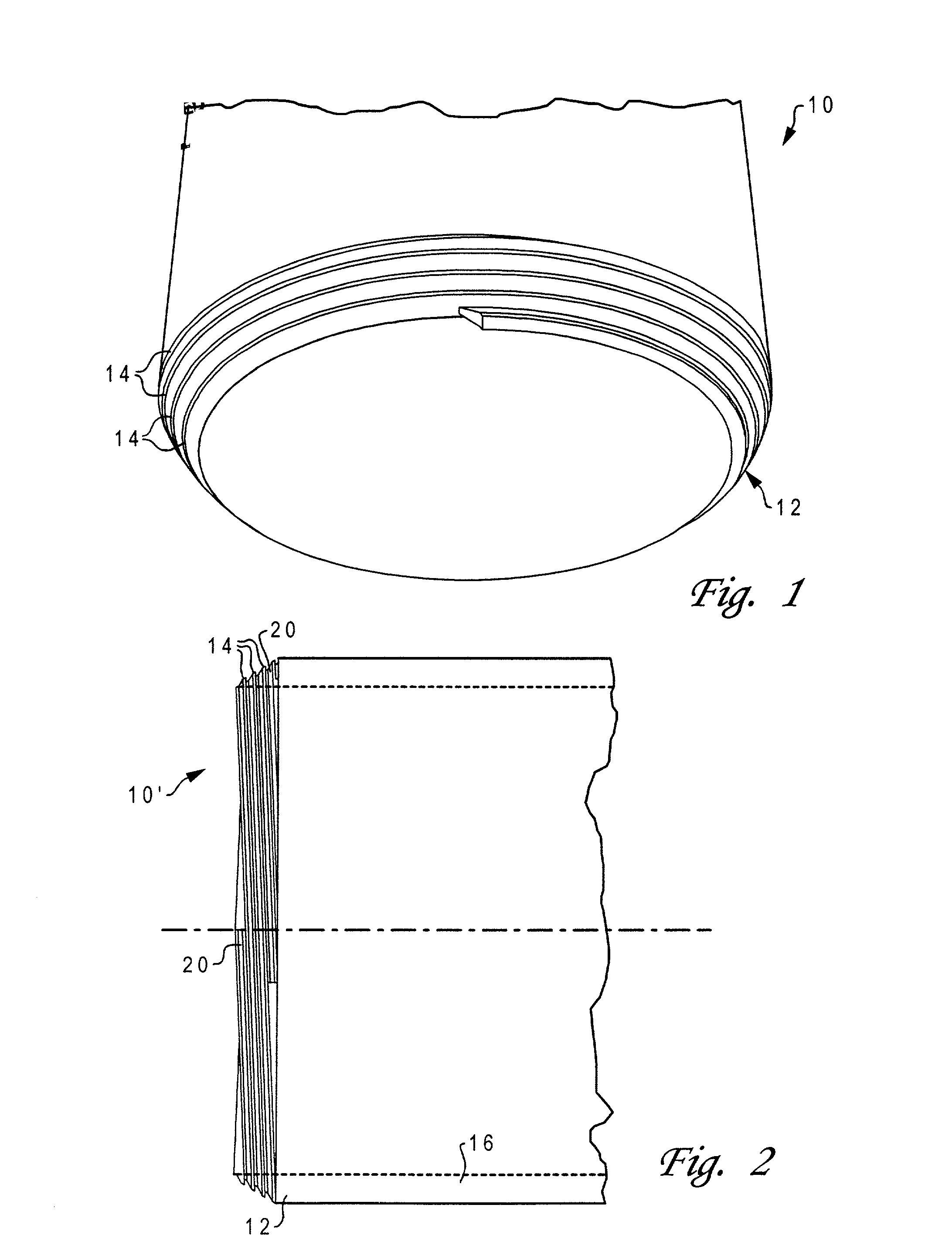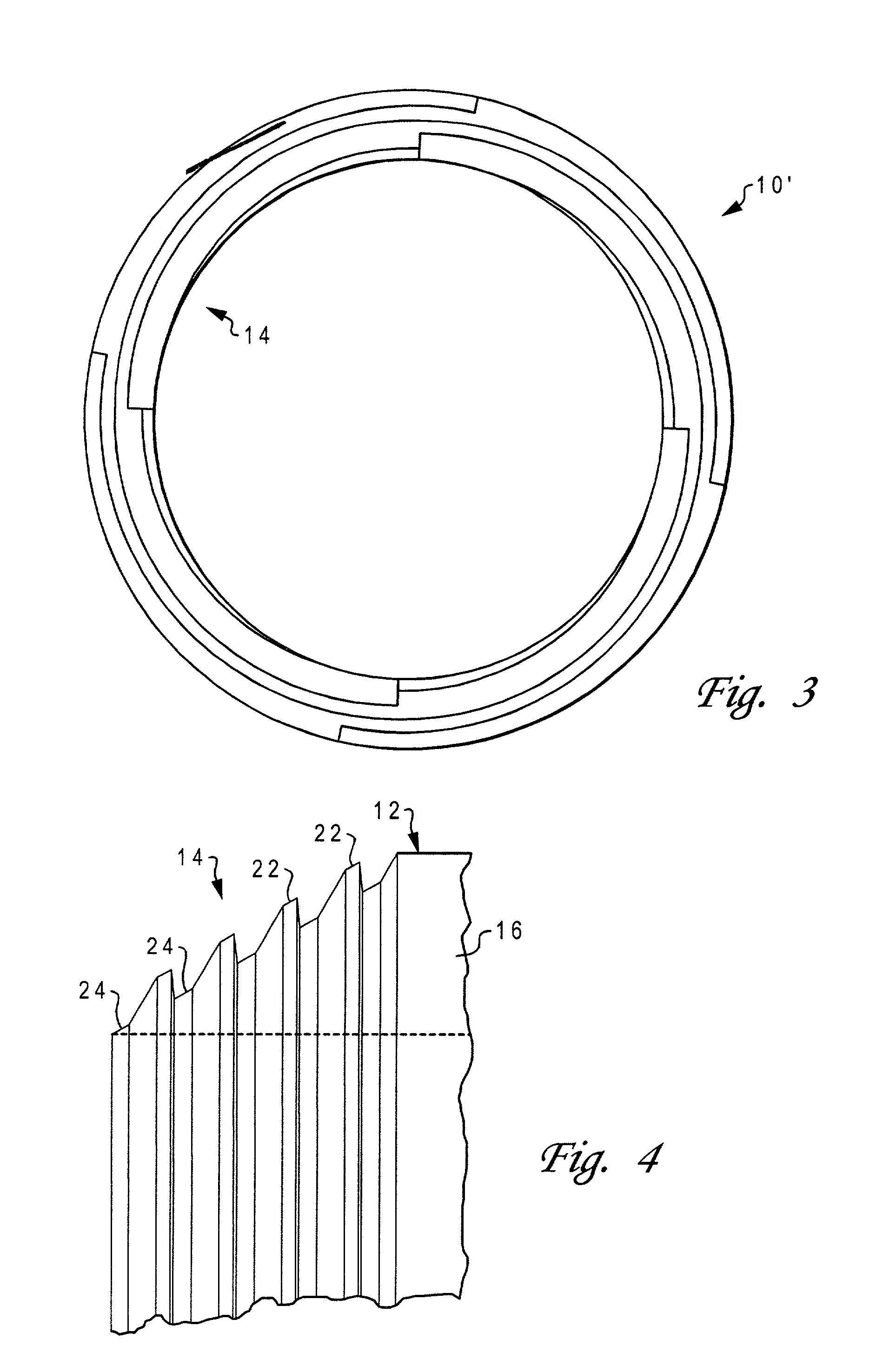Plastic pipe adhesive joint
a technology of adhesive joints and plastic pipes, which is applied in the direction of hose connections, screw threaded joints, mechanical equipment, etc., can solve the problems of deteriorating cabling protected by conduits, loss of products, and continuous leakage of pipes in such systems
- Summary
- Abstract
- Description
- Claims
- Application Information
AI Technical Summary
Benefits of technology
Problems solved by technology
Method used
Image
Examples
Embodiment Construction
[0028] With reference now to the figures, and in particular with reference to FIG. 1, there is depicted one embodiment 10 of a pipe constructed in accordance with the present invention. Pipe 10 is cylindrical with a generally circular cross-section, and has an end 12 provided with male threading 14. The hollowed interior of the pipe may be used to convey a particular fluid product, or may accommodate other conduits e.g., telecommunications lines.
[0029] Pipe 10 may be constructed of any durable material, preferably a rigid polymer such as polyvinyl chloride (PVC) or acrylonitrile butadiene styrene (ABS). The specific dimensions of pipe 10 may vary considerably, depending upon the application. For example, the outer diameter of pipe 10 might be as small as half an inch, or as large as six feet. The length of pipe 10 may similarly vary, from a couple of feet to a hundred feet or more.
[0030] Threading 14 is tapered across the complete thickness of pipe wall 16. The taper angle is relati...
PUM
| Property | Measurement | Unit |
|---|---|---|
| squeeze angle | aaaaa | aaaaa |
| squeeze angle | aaaaa | aaaaa |
| outer diameter | aaaaa | aaaaa |
Abstract
Description
Claims
Application Information
 Login to View More
Login to View More - R&D
- Intellectual Property
- Life Sciences
- Materials
- Tech Scout
- Unparalleled Data Quality
- Higher Quality Content
- 60% Fewer Hallucinations
Browse by: Latest US Patents, China's latest patents, Technical Efficacy Thesaurus, Application Domain, Technology Topic, Popular Technical Reports.
© 2025 PatSnap. All rights reserved.Legal|Privacy policy|Modern Slavery Act Transparency Statement|Sitemap|About US| Contact US: help@patsnap.com



